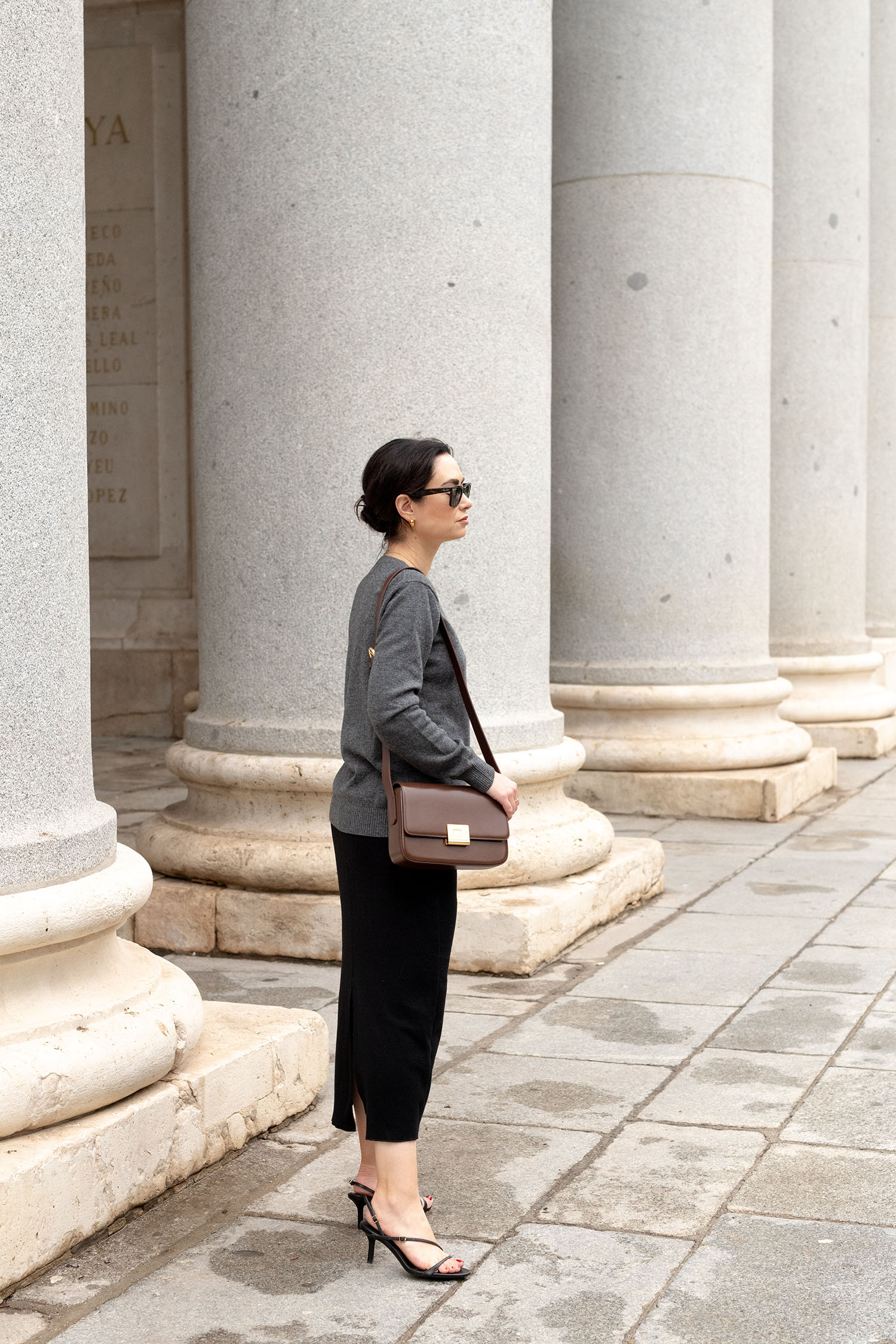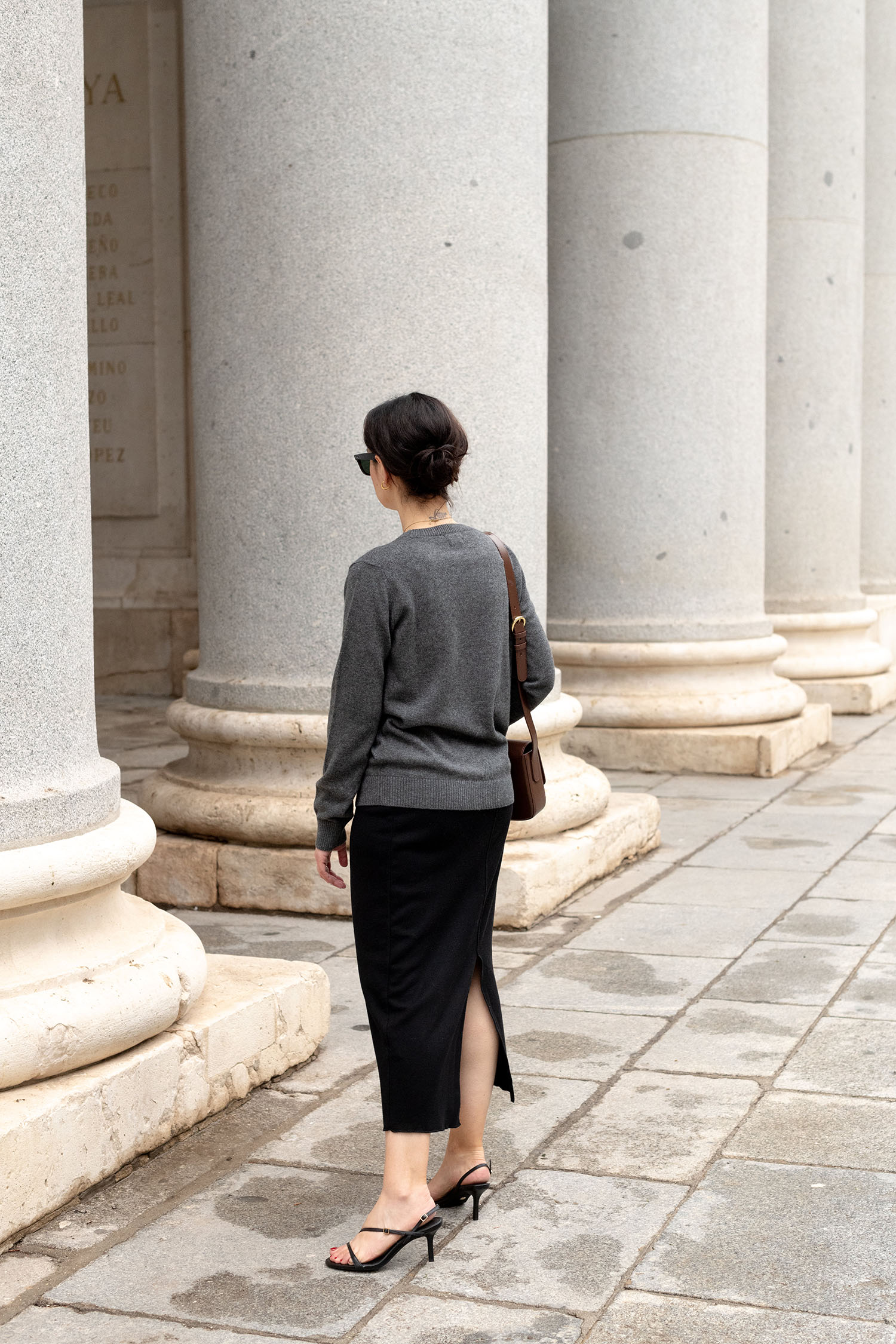

Zara skirt (similar)
Zara sandals (similar)
A. Cloud handbag (c/o) (similar)
RayBan sunglasses
Mejuri necklace (similar)
Linjer rings (c/o)
Mejuri earrings (c/o) (similar)
Location: Museo del Prado – Madrid, Spain
The Prado is the preeminent art museum in Spain. It’s among the foremost galleries in the world, really, ranking alongside the Louvre, the Uffizi and the Met when it comes to breadth and scope of collection, not to mention curation. Naturally, I’d been looking forward to our visit with anticipation – not just in the months before our trip, but for years before we even started planning it. It didn’t turn out exactly as I’d expected, I confess… but then again, what in life ever does?
We bought our tickets for the Prado in advance, a trick we’ve learned from experience – when we left a visit to the Uffizi to chance in the fall of 2018, we wound up getting in for a late afternoon time slot and nearly boiled to death in the crowded, un-air-conditioned halls while the Tuscan sun shone down. As we always do now, we chose the earliest entry time: 10 am, which is still late for us. But this gave us time to enjoy the walk there. At least it did in theory. In reality, clouds, heavy with rain, had already been hanging over Madrid for a full day by this point. The walk was more of a hopeful mad dash, mostly spent avoiding a potential downpour. But we made it. So far, so good. We even found time to snap a few photos outside before we went in to explore.
…and it’s a good thing we did, since the Prado doesn’t allow photography. Not even with cell phones. Until our visit, I hadn’t been to a museum where no photos were permitted in over a decade. (It was the Musee d’Orsay, in case you wondered. And they gave up their firm stance on snapshots when smartphones became commonplace, logically understanding that it would be next to impossible to police every person who came in for the entire duration of their visit.) Most museums place some limitations on it, of course. No flash, no tripods, things like that. And it makes sense, of course, because anything like that would inevitably disrupt other visitors. But a single snapshot here and there never has, in my experience, which isn’t exactly limited.
It was a bit odd, honestly. Without being able to take out their phones to capture paintings they particularly liked, most patrons seemed, rather than more engrossed in the art, a bit listless. And I understood them. I came to photography a bit earlier than the average person. But for the past ten years, at least, we’ve collectively viewed, and thus interacted with, the world through a camera lens, which is a different way of seeing it than simply looking at it. When we look through a lens we reflect on the picture in front of us in a new way, we consider and process the parts of it that appeal to us. A camera forces us to ask what and why in a way that our eyes alone do not. We contemplate the relation between the thing and ourselves actively.
And therefore, without our cameras at our disposal in the Prado, we became passive observers of the art around us. I still remember the pieces that truly spoke to me, like Francisco Pradilla’s Dona Juana La Loca. But to look back on it properly, I need to do a Google search, because memory is both finite and fickle, heavily influenced by our emotions. In my recollection, Queen Juana’s features are soft and traditionally pretty, because I empathize with her character. But in the painting I saw at the Prado, she was plain and sombre, depicted objectively, a strange woman in a stranger scene. We don’t always remember events or visuals. What we remember is how we feel.
In that way, I suppose, the Prado’s choice to ban photography is an interesting experiment. Visitors are left with their emotional reaction to the art inside, because they can take away nothing else but gifts from the souvenir shop.
My emotional reaction, it turns out, was as much about the temporary loss of my camera as it was about the art itself. I felt it acutely.
Sometimes, I look back on life before smartphones and think we gave up on some wonderful parts of it too easily. I miss letter writing, for example, even though it required such effort. It was something I did from the time I could write, and never imagined I would stop, but I’ve written only one letter since my mid-twenties. Text messaging lacks so much of the thought and care that letters offered, but you can’t beat it for efficiency, and I love it even though I regret that my mailbox is so often empty. But we’ve also gained wonderful things, like digital photography. We were so careful with our pictures, when we shot on film and developing cost money. “I wish film was still the norm,” a young acquaintance told me recently.
…and I knew immediately she’d never lived in a time where there wasn’t another option. I have photos from my teen years, but they’re few and mostly from special events. We didn’t take photos just because – we couldn’t. The cost was too high. And so we were selective, we rationed the moments we really wanted to remember in pictures. I hated it. When I look back on my photo albums, I’m still sorry they’re so relatively thin. It’s thrilling to me, to take all the photos I want, all the time, without limits. I was sorry to lose that, even for the few hours we were in the Prado; I admit it openly.
We had a beautiful visit, in spite of that, of course. But I wish I could show you that, instead of just telling you. I wish I could look back on it myself from time to time, to remember.
Hope you’re having a lovely Sunday, Cee!! This is such a beautiful outfit and I love, love, that bag. Neutral outfits & accessories will always have my heart! As for not being able to pull out your phone? I’ve heard some Chanel boutiques won’t allow photos and it’s honestly hard to fathom. Photos are half the fun and always soooo wonderful to look back on! xo
Hearted Life (life + style blog)